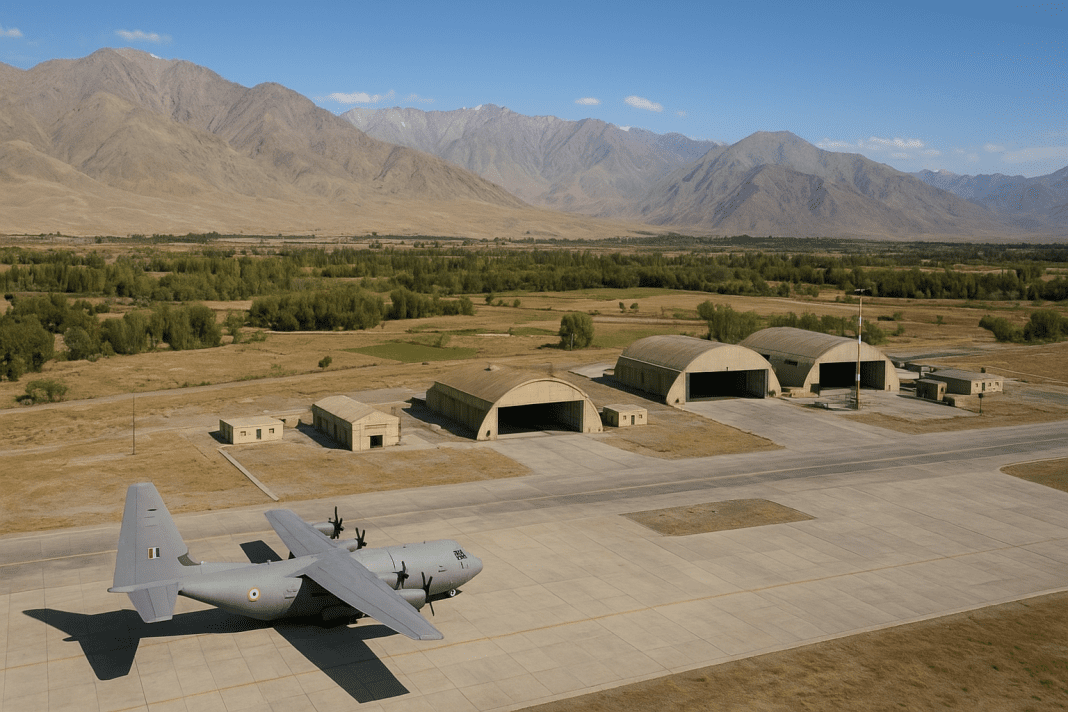India’s presence at the Ayni Airbase in Tajikistan once symbolized a major step in the nation’s defense and diplomatic reach beyond South Asia. The airbase, located near Tajikistan’s capital, Dushanbe, was seen as India’s window into Central Asia and a critical backup facility close to Afghanistan. It also served as a counterbalance to Pakistan’s military influence in the region.
Ayni Airbase: India’s Only Overseas Military Outpost
The Ayni Airbase, also known as Farkhor-Ayni, was first developed by India in the early 2000s. It marked India’s first major military presence outside its borders. The location of the base was carefully chosen—it allowed India to monitor developments in Afghanistan and Central Asia while maintaining a strategic advantage in case of regional instability.
India invested heavily in the project, with nearly $70 million spent on upgrading the Soviet-era facility. This included extending the runway to 3,200 meters, constructing new hangars, installing air traffic control systems, and modernizing communication networks. Reports suggested that by 2010, the base was fully operational, with Indian Air Force (IAF) fighter jets and helicopters stationed there for specific missions.
India warns NATO chief—India never asked Russia to explain Ukraine war
However, while India built much of the infrastructure, operational control remained in the hands of Russia. This arrangement meant that even though the base carried India’s investments, New Delhi had limited say in how it was used. Over the years, this delicate balance of power started to tilt, ultimately leading to India’s quiet withdrawal from its only overseas airbase.
The Hidden Struggles Behind India’s Withdrawal from Ayni Airbase
The decision to exit the Ayni Airbase did not come suddenly. Reports indicate that India had begun scaling back its presence as early as 2021–2022, though the official acknowledgment came much later. According to government statements, India had already withdrawn from the base by 2022, but the reasons for this move remained unclear for a long time.
Several factors contributed to this withdrawal. One of the most significant was the nature of India’s agreement with Tajikistan. Reports suggest the two countries had a lease, but they never made any formal treaty or written document public to confirm India’s long-term operational rights. When Russia renewed its own lease for the base in 2012, it further reduced India’s role.
U.S. waiver saves India’s $500-million Chabahar project — vital trade lifeline with Iran continues
Russia continues to hold major control over Tajikistan’s defense network through the Collective Security Treaty Organization (CSTO), keeping a strong influence over key facilities like the Ayni Airbase. This dominance limited India’s operational freedom despite its heavy investment in the base.
At the same time, China’s growing influence in Central Asia added pressure. Sharing a border with Tajikistan, Beijing reportedly opposed India’s military presence. To avoid straining ties with either Russia or China, Tajikistan refrained from signing any formal deal with India, which gradually led to India’s reduced access and final withdrawal.
Costly Operations, Political Pressure, and Fading Access
Maintaining a base thousands of kilometers away from home is an expensive affair. The logistics, maintenance, and rotation of personnel require steady funding and political will. With the United States pulling out of Afghanistan in 2021, India’s strategic motivation to maintain such an overseas facility weakened. The region’s geopolitical focus shifted, and India faced growing operational challenges at Ayni.
Russia’s control over the base played a decisive role. Even though Moscow did not publicly announce India’s withdrawal, it effectively ensured that India’s operational role was diminished. Access restrictions, administrative hurdles, and tight control over flight operations made it difficult for India to function independently. Over time, India’s presence at the airbase became symbolic rather than operational.
China’s growing footprint in Tajikistan also added to the complexity. Beijing’s economic investments and military cooperation with Tajikistan strengthened in the past decade. As China and Russia deepened their regional coordination, the idea of a non-regional power like India operating a military base there became increasingly sensitive.
In practical terms, India’s departure from the Ayni Airbase marked the end of its only active overseas military foothold. The base had once represented India’s aspirations to project power and maintain influence in Central Asia, especially near Afghanistan. But changing regional alliances, the rise of Russia-China coordination, and the lack of a formal agreement left India with little leverage.
The episode reflects the fragile balance of regional diplomacy in Central Asia, where military and strategic interests often intertwine with great-power politics. While India’s early involvement at Ayni highlighted its ambitions to expand its defense reach, its gradual exit underscores how global and regional pressures can reshape even the most carefully built strategic footholds.

